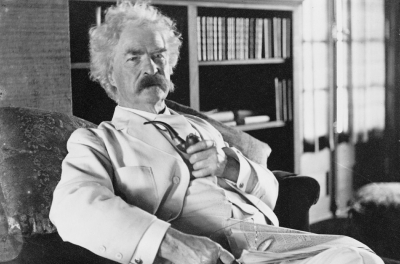
Samuel Langhorne Clemens known by his pen name Mark Twain, was an American writer, humorist, entrepreneur, publisher, and lecturer. He was lauded as the “greatest humorist the United States has produced,” and William Faulkner called him “the father of American literature”. His novels include The Adventures of Tom Sawyer (1876) and its sequel, the Adventures of Huckleberry Finn (1884), the latter often called “The Great American Novel”.
Twain earned a great deal of money from his writings and lectures, but he invested in ventures that lost most of it—such as the Paige Compositor, a mechanical typesetter that failed because of its complexity and imprecision. He filed for bankruptcy in the wake of these financial setbacks, but in time overcame his financial troubles with the help of Henry Huttleston Rogers. He eventually paid all his creditors in full, even though his bankruptcy relieved him of having to do so. Twain was born shortly after an appearance of Halley’s Comet, and he predicted that he would “go out with it” as well; he died the day after the comet made its closest approach to the Earth.
As a young pilot, Clemens served on the steamer A. B. Chambers with Grant Marsh, who became famous for his exploits as a steamboat captain on the Missouri River. The two liked each other, and admired one another, and maintained a correspondence for many years after Clemens left the river.
While training, Samuel convinced his younger brother Henry to work with him, and even arranged a post of mud clerk for him on the steamboat Pennsylvania. On June 13, 1858, the steamboat’s boiler exploded; Henry succumbed to his wounds on June 21. Twain claimed to have foreseen this death in a dream a month earlier, 275 which inspired his interest in parapsychology; he was an early member of the Society for Psychical Research. Twain was guilt-stricken and held himself responsible for the rest of his life. He continued to work on the river and was a river pilot until the Civil War broke out in 1861, when traffic was curtailed along the Mississippi River. At the start of hostilities, he enlisted briefly in a local Confederate unit. He later wrote the sketch “The Private History of a Campaign That Failed”, describing how he and his friends had been Confederate volunteers for two weeks before disbanding.
Picture Credit : Google



